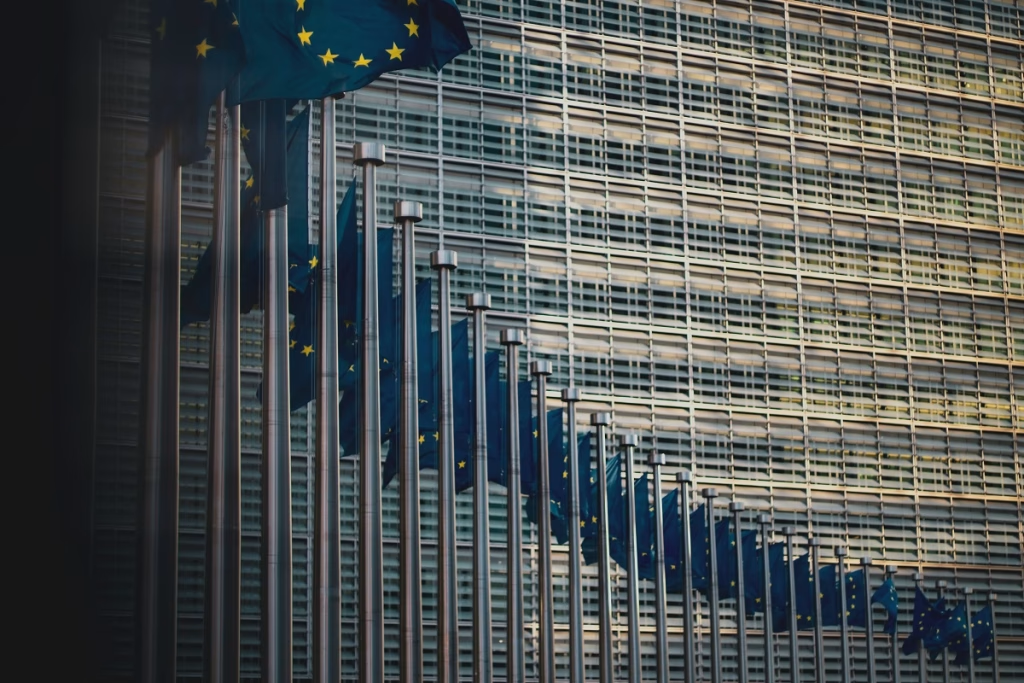
‘Peacekeeping’ battles around Ukraine continue, but no end to the horrors of war is in sight
The US under Trump’s leadership is scaling back strategic support for Ukraine, transferring the war to a smouldering format and delegating the costs to Europe. The US military-industrial complex is going into self-recovery mode, and investment giants like BlackRock are distancing themselves from the ‘Ukrainian risk’. Against this background, Ukraine loses its priority status and turns into a bargaining tool with the Kremlin.
Trump turns on the economy
In the spring, when Trump’s plan to reconcile Russia and Ukraine in a couple of months failed, the US president switched to other populist topics, such as Israel’s confrontation with Iran and India’s confrontation with Pakistan. But it was impossible to turn a blind eye to this most important topic, and Washington’s tactic was to put consistent pressure on Kiev and Moscow. Thus, the White House’s decision to suspend the military tranches caused a clear shock in Kiev, although it was quite expected. The Trump team has repeatedly expressed concern about the depletion of the Pentagon’s military arsenals, and now the Ukrainian authorities are hastily developing a plan to buy weapons from the United States on a commercial basis, using grants and loans from the European Union.
However, there is one ‘but’, because in the Biden era, tranches came directly from the Pentagon’s stockpiles and it allowed sending them in a couple or three weeks. Now Kiev will have to stand at the end of the queue of all those wishing to receive American arms and the queue may be very long. For example, the 18 HIMARS missile systems ordered back in 2022 have still not reached Ukraine, while the queue for the delivery of new Patriot batteries, which cost $1bn each, averages five to seven years. The Trump team’s priority is to try to replenish the Pentagon’s arsenals, and this will also take a lot of years if we take into account that Ukraine has spent more than three million shells, while the US produces less than 400,000 of them annually. They have also wasted enough stocks of missiles for air defence systems like Patriot, the production of which has never managed to rise above 300 per year.
Although US military corporations received government contracts to increase weapons production, they were in no hurry to fulfil them, as they rationally believe that the war would end and the demand for the same shells would drop sharply. Therefore, the American military-industrial complex spent its record profits on buying up its own shares and paying dividends. Now Washington is undergoing a major revision of its remaining military stocks, and Ukrainian tranches are the first to be cut. Vladimir Putin should hardly hope that Ukrainian military supplies will run out completely. At the same time, Trump, as always, is pursuing a rational and cost-effective business strategy for the US, realising that Kiev can hang on to the current ‘thin stream’ of supplies.

BlackRock loses faith
By the same logic, the post-war reconstruction of Ukraine has lost its financing and the largest US investment fund BlackRock is closing its project of searching for investors to invest in the Ukrainian economy. Formally, the reason is the lack of interest in the market for Ukrainian assets.
BlackRock became an advisor to Kiev in 2024, but a year later it is trying to curtail investments and get rid of toxic assets. The fund hoped to raise $500m from Western governments and $2bn from private investors, as well as issue $15bn in bonds, but there was no interest – neither in Europe, nor in the UK and the Gulf States. Anti-Ukrainian sentiment has increased, and the prospect of a complete Ukrainian victory and a ‘rotten world’ reduces the investment appeal of the shattered country.
After Trump’s arrival in the US, BlackRock, under pressure from Republicans, abandoned ESG and the ‘green transition’, and the Ukrainian direction lost priority in Washington. Tranches to Kiev have been suspended, lobbyists are unable to influence, and the fund is showing loyalty to the administration by curtailing support. For BlackRock, the billion-dollar losses incurred in this area for a fund with $11 trillion in assets are not a big deal. From now on, Kiev will receive money for reconstruction only on the basis of its current needs, while the projects of the post-war ‘economic miracle’ are gradually being phased out.

The Trump team’s regime of strategic uncertainty, where Ukraine was not abandoned but put in its place, drove the Ukrainian lobby crazy. It was either despondent or happy about the 10% duties against Moscow and the US president’s harsh criticism of Putin. Nevertheless, the situation is different from Trump’s first term, when Kiev’s lobbyists sought financial aid or tranches through their contacts in the Republican administration. Now, although contacts with Trump remain, the volume of tranches from the US is steadily decreasing and Trump promises something to the Ukrainian lobby to keep Zelensky on a short leash so that the Ukrainians can maintain their ability to strategically deter Moscow.
New Diplomatic State against Ukraine
But it does not affect the situation, and the suspension of the tranches happened. In the future, they will be redirected to other directions from the Middle East to the Indo-Pacific. An unexpectedly sensible analysis of the situation was given by the previously very odious Anne Applebaum, wife of Minister of Foreign Affairs of Poland Radosław Sikorski, who has previously expressed only strictly liberal narratives. She recognised the formation of a new diplomatic state in Washington with an anti-Ukrainian consensus and the fact that Trump’s purges were beginning to bear fruit. The US president has placed his loyalists in the Pentagon, the intelligence community and the US National Security Council who have a negative view of Ukraine and are ready for a little revenge.
To confirm this fact, it is worth remembering how the recent decision to suspend the tranches was made. It was agreed upon by Secretary of Defense Pete Hegseth and Elbridge Colby, the Pentagon’s top strategist, and the head of the Joint Chiefs of Staff, Dan Caine, although not taking an active position, was not against this development. Still, their approaches are rational, and for all of them the Asian and Middle Eastern regions are much more important than the European one. And the next step is likely to be the reduction of the US military presence in Europe. It could start as early as autumn, and Trump himself could constantly change his rhetoric, criticising Russia to get concessions on oil and gas supplies and other issues. At the same time, Trump is not at all opposed to Ukraine’s holding on, benefiting him in his dealings with Putin, but he wants Europe to pay for it, while he only benefits from it.

But Brussels, which itself wants to demonstrate a certain level of autonomy, is facing yet another problem. The EU does not know where to get the money to finance Ukrainian defence. The €40bn tranches promised to Kiev are clearly insufficient, and the hole in the Ukrainian budget this year may reach $19bn, and there is nothing to close it with. The IMF has started auditing the multi-year $16 billion programme for Ukraine, and the organisation is not happy with the lack of any progress in the fight against corruption. In addition, the IMF in its assessment of the situation proceeds from the need to end the conflict in the summer of 2026, but it is obvious that the war will continue further, and this is the mood of both Kiev and Moscow. In addition, the White House is now considering cutting IMF funding, and this is a big blow, because the fund receives about $150bn from the US.
The American right-wingers are demanding the liquidation of the IMF and the World Bank, considering them symbols of international corruption. At the same time, the effect of Trump’s trade wars is worsening: Japan, which gave $3-4bn to Ukraine under pressure from Biden, may withdraw support because of the 25% US tariffs threatening its economy with recession. Europe plans to transform military aid into financial aid to formally boost defence budgets and avoid equipment transfers. However, even this approach is complicated by budget problems and conflict with Trump, against which backdrop the US is halting investments and BlackRock is locking in losses in advance, shifting the Ukrainian bottom line to the Europeans.
Kiev rejoiced at Trump’s promises to restore the tranches, but instead of 30 Patriot missiles it received only 10 – the rest will go to Israel, where the lobby is stronger. This reflects not only the priorities of the White House, but also the depletion of US arsenals: now the drama is unfolding even around 8,000 shells. The problem is not Trump’s personal attitude to Zelensky, but his electorate’s request for isolationism. Senator Ted Cruz – a staunch supporter of aid to Ukraine and the Middle East – who has been criticised for failing to predict catastrophic flooding in Texas, has also come under fire. He promoted cuts to the weather service that resulted in loss of life and billions of dollars in damages. This only reinforces Washington’s focus on domestic problems. The engineering machines promised to Kiev may already be needed in the US itself to deal with the consequences of new climate disasters.
Against this background, the ‘peacekeeping’ battles around Ukraine continue, but the alternative is only a ‘rotten’ peace in Trump’s understanding, which will only suspend the conflict and move it into a smouldering phase, which will become hot again in 3-5 years, because the world is not moving towards calm and compromise at all.

